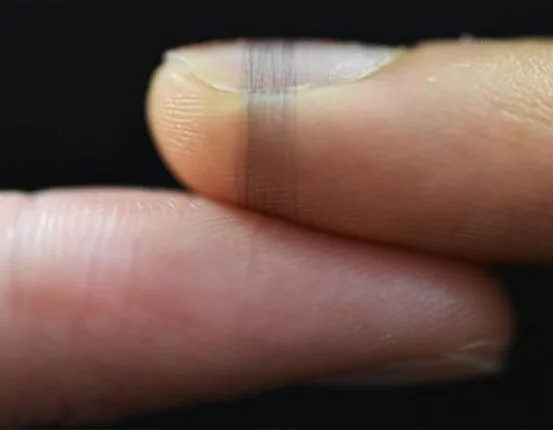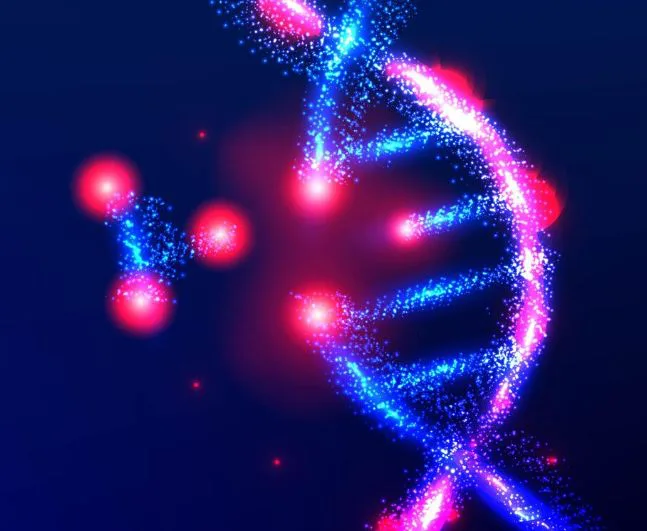Super-thin and flexible electronics are here to stay. This tech will not only create but it will also revolutionize the use of gadgets. Since, it leads to unlimited possibilities for innovative and practical applications. Some of the them include but not limited to – wearable tech, portability, healthcare applications, space probes etc.
Read MoreTag: innovation
Nanoparticles Break Blood-Brain Barrier for Cancer Treatment: Targeting Metabolic Adaptability
Scientists at the Sylvester Comprehensive Cancer Center, part of the University of Miami Miller School of Medicine, have crafted a tiny particle capable of crossing the blood-brain barrier. The team envision to tackle both primary breast cancer tumors and brain metastases in a single treatment. Their investigations indicate that this approach can reduce the size of both breast and brain tumors in lab experiments.
Read MoremtDNA: Key Component of Energy Production and Trigger of Inflammation
Entity responsible for powering our cellular functions and in keeping us going is mitochondria. These powerhouses are little sausage-shaped organelles in most types of cells that have a nucleus. These organelles convert chemical energy from the food that we ingest into usable form of energy. This energy is termed as adenosine triphosphate (ATP). ATP is the fuel that we require to carry out the regular activities at cellular level.
Read MoreArtificial Life: Researchers Forge New Building Blocks
Researchers at the University of Cologne (UoC) have achieved a groundbreaking milestone by creating artificial nucleotides. Nucleotides forms the building blocks of DNA. So, if we go by the research, the innovative development will make way for potential advancements in genetic engineering as well as molecular biology.
Read MoreInnovative SiPh Chip: Nanoscale Light Computing Breakthrough
Imagine a world where AI computations are not bound by the limitations of traditional power sources, that is, electricity but by the power of light waves. This is precisely the vision that researchers at the University of Pennsylvania have brought to life with their innovative chip design. This innovation will not only enable the chip to fast-track the processing speed of computers but it will also lessen their energy consumption.
Read MoreElectron Dance: Creating Robust Continuous Time Crystals
Researchers at TU Dortmund University have achieved a breakthrough by creating a remarkably resilient time crystal. It exceeds the temporal stability observed in previous trials by millions of times. This accomplishment not only validates a captivating phenomenon proposed by Nobel Prize laureate Frank Wilczek approximately a decade ago but also echoes themes that have fascinated science fiction enthusiasts. The intriguing findings have been officially documented in the prestigious journal Nature Physics.
Read MoreBiohybrid Bipedal: Muscle-Powered Two-Legged Robot
Unlike robots, our bodies are super flexible and can make delicate moves effortlessly. Components like muscles, joints, and nerves work in tandem and allow us to make precise and delicate movements with ease. Robots, on the other hand, rely on rigid structures and predefined movements; in contrast, our bodies can adapt and respond dynamically to various situations.
Read MoreDecoding Quasicrystal Magnetism: Unveiling a Fresh Magnetic Blueprint
Quasicrystals are interesting materials since they defy regular atomic pattern. It’s non-repeating structure captivates researchers. Since, it leads to extraordinary properties. Thus, the exotic traits not only challenge the traditional material science views but the same also inspire countless innovations. However, there is a rebel in the family of quasicrystals, the Tsai-type icosahedral quasicrystal (iQC). It is a specific variant of quasicrystal with a unique atomic arrangement characterized by icosahedral symmetry. The symmetry involves a structure that resembles a 20-sided polyhedron.
Read MoreGreen Power Drive: Future Cars Might Run on Cobalt Free Batteries
In the world of electric vehicles, lithium-ion batteries are always preferred and they often contain cobalt. While cobalt plays a crucial role in these batteries, its extraction and processing bring about a set of challenges. Thinking on these lines, MIT researchers have crafted a battery material with the potential to revolutionize the sustainability of electric cars. This groundbreaking lithium-ion battery boasts an organic material-based cathode. Thus, stepping away from the conventional use of cobalt or nickel, which is often present in such batteries.
Read MoreQuantum Leap: Scientists Compute with Light Innovation
Our future tech game just got a major upgrade! Scientists at Heriot-Watt Uni in Edinburgh just dropped a mind-blowing method. Optical circuits are getting a turbocharged programming boost. The discovery promises unhackable communication networks and lightning-fast quantum computers.
Read MoreCondensing Neutron Pairs: Helium-8’s Exciting Revelation
Scientists at Peking University have successfully uncovered the elusive 02+ state of 8He. The 02+ state of 8He refers to a specific energy state of the helium-8 (8He) nucleus. The “2+” signifies that the state has a positive parity, and the “0” indicates a specific spin value. The observation and understanding of such nuclear states provide valuable insights into the structure and behavior of atomic nuclei.
Read MoreFirefighters of the Future: The ‘Flying Dragon’ Robot
How about a dragon flying around, but get this – not spitting out fire, but actually putting out flames with water! Japanese researchers are up with concretizing this cool idea. Thinking of firefighting dragon as blasting water on out-of-control fires, these scientists are working on a dragon buddy, which someday would join firefighting teams worldwide. It’s like a mix of myth and modern-day firefighting.
Read MoreBattery Technology: Charging into the Future with Indefinite Causal Order
Whenever we talk about “quantum”, we immediately think about quantum computers. But guess what? There’s more cool stuff in the quantum world, like these things called quantum batteries. Although, it sounds a bit puzzling but once its out of lab, it could totally shake things up especially for sustainable energy. And might even power future electric rides.
Read MoreHopfions Discovered: Pioneering Breakthrough in Crystal Structures
Hopfions, the magnetic spin structures, have gained significant attention in recent years. Although their predictions have been observed several decades ago. A collaborative research effort from Sweden, Germany, and China presents it’s the first experimental evidence.
Read MoreRobotic Needle Achieves Precision Navigation in Living Model
When it comes to cancer-related fatalities, lung cancer tops the list. One of the main reasons could be the presence of tiny tumors in deep within the lung tissue. This poses a major challenge for surgical accessibility. To address this challenge, researchers at UNC Chapel Hill and Vanderbilt University have been trying to fabricate an exceptionally flexible yet durable robot. The device will have the capability of maneuvering through the intricate terrain of the lungs.
Read More














